Clogged toilet: 4 ways to fix the problem
No matter how carefully you use the plumbing fixtures, sometimes for objective or subjective reasons they can form a blockage, without removing which you will not be able to use the toilet. There is nothing terrible when you know what to do - if the toilet is clogged.
Using the tips below, you can in a few minutes be able to restore the permeability of the sewage system, earning immense gratitude to the household.

Causes of blockage
A large number of factors affect the sewage flow rate. This is the coefficient of friction of materials, and the degree of self-cleaning of sewer pipes, and hydraulic resistance.
However, the most common causes of blockage are:
- Organic deposits. Small particles of food and waste entering the sewage system may linger on the walls of pipes, accumulate and, finally, completely block the flow of fluid. The risk of clogging with fatty waste increases if you have sewage pipes made of cast iron in your apartment. This material has a rough surface, which to a large extent contributes to the accumulation of fat and other small particles.
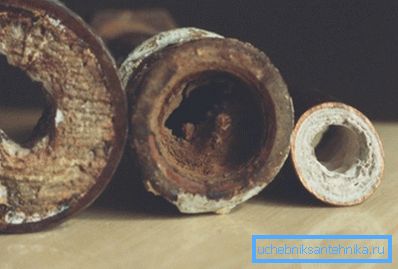
Note! An even greater problem is internal defects. If before that the sewage system was damaged as a result of mechanical impact or corrosion, blockage cannot be avoided.
- Foreign objects. One of the common causes of violation of the patency of the toilet. Before you clean the toilet - if it is clogged - you need to find out exactly what caused the trouble. From this to a large extent depends on the choice of how to get rid of the blockage. Also, before starting any procedures, it is necessary to determine the place where the traffic jam formed. The fact is that all the sanitary appliances in the apartment are connected to the same sewer line. Consequently, the blockage may not be in the knee of the toilet bowl, but in a completely different place.
To diagnose, it is necessary to open the taps in the kitchen, in the bathroom and pour a small amount of water into the toilet, then see where it goes and where it doesn't:
- If the liquid is badly decreasing in one room, but the patency of other parts of the sewer system is preserved, then you can safely take up the cleaning with your own hands.
- If the water does not flow well or does not go away at all in all the drain holes, the case is most likely in a traffic jam that has blocked the vertical drain riser. No troubleshooting instructions here will help. It is necessary to call the plumber of the organization that performs maintenance at home.

Next we determine the degree of blockage. We take a liter of water, pour it into the toilet and see if the water runs out. If so, then everything is not so bad and can be taken for the removal of traffic jams.
Tip! Before cleaning the toilet - if it is clogged, pour one or two buckets of hot water into the bowl. In many cases, this is a simple way to solve the problem.
If the cork is not resolved, you need to move to more radical methods.
Blockage removal
Method 1. Hydropneumatic
To eliminate the clogging of the toilet in this way, a well-known plunger is required. This device perfectly cleans not too dense traffic jams, formed by fine debris of inorganic origin.
The design of the plunger is as simple as possible: a wooden handle with a rubber piece of a certain diameter put on. Remember that to clean the toilet you need a device, the suction cup which covers the entire drain hole of the toilet.
The principle of operation is also simple. By making forward movements with a handle, you create an increased pressure in the pipe (siphon), which destroys the blockage, pushing its remains further into the sewer system.

To fit the plunger more closely, you can add water to the toilet so that it slightly covers the lower edge of the rubber part, preventing air from entering.
Having made several translational movements, it is necessary to sharply tear off the suction cup from the surface of the toilet bowl. Part of the garbage can be thrown into the bowl. It needs to be removed.
Tip! Instead of a plunger, you can take an empty plastic bottle from under the water. She needs to cut off the bottom and use the same way for the plunger.
An advanced model of a plunger, a pneumatic pump, is being sold in modern building stores. Outwardly and on the principle of operation, this device is similar to a conventional pump. It allows you to create a sufficiently large pressure in the pipes, which is guaranteed to destroy most of the traffic jams.
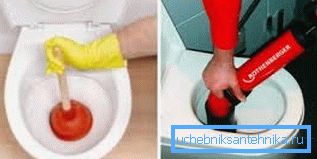
The only downside is the high price. Not every home artist is ready to part with a significant amount of money needed to purchase an appliance that will be used only from time to time.
Method 2. Chemical
And how to clean without the plunger the ill-fated toilet, clogged at the most inopportune moment? To do this, there is a huge amount of household chemicals that you can buy in the nearest supermarket. They are available in the form of a gel, spray, granules, powder, liquid, and so on.
Such names as Mole, Tiret, Mr. Muscle and so on are widely known.
You can choose based on personal preferences. Their characteristics are similar to each other, and the instruction manual is indicated on the back of the package. Strictly comply with it, so as not to harm your own health and sewer system.

Method 3. Mechanical
In this case, to eliminate the blockage you will need a plumbing cable. It is perfect for the destruction of complex, highly compressed traffic jams, formed of both organic and inorganic waste.
In addition, using special nozzles, you can pull out a rag, a large potato and so on from a siphon or sewer pipe.
There are plumbing cables of various lengths. With their help, you can cope with the blockage, located at a fairly significant distance from the drain neck of the sewer pipe.
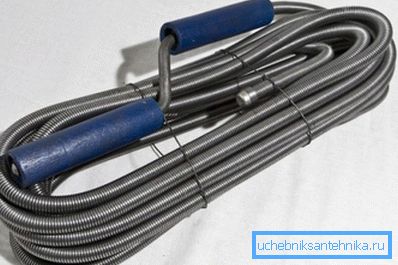
The sanitary cable for sewer cleaning made of steel wire twisted into a spring is considered the most convenient. This device is equipped with a handle for rotation and various tips that can be changed depending on the nature of the problem.
Expensive options have a protective tube made of plastic, which protects the surface of plumbing fixtures from damage during the use of the cable.
The scheme of using the device is as simple as possible:
- insert the tip of the sanitary spiral into the drain hole and push it to the place where the plug is formed;
- then you need to lightly rotate the cable so that the tip destroys tightly compacted waste in the blockage;
- if the movement of the helix is stalled, you can make a couple of turns in the other direction, and then continue the cleaning.
Lowering the level of fluid in the toilet bowl indicates a successful completion of work. It is necessary to pull out the spiral and pour one or two buckets of hot water into the toilet.
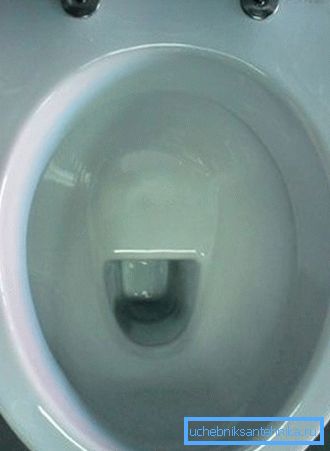
Method 4. Electromechanical
This cleaning method involves the use of special devices. It can be used in cases where other methods have not brought results.
Tip! In order not to spend a lot of money on the purchase of electrical equipment, you can rent the necessary equipment. This service is provided by most large building stores.
Externally, the device is a powerful drill and drum, on which the cable is wound. In addition, the kit includes various nozzles used for cleaning various types of pipelines.
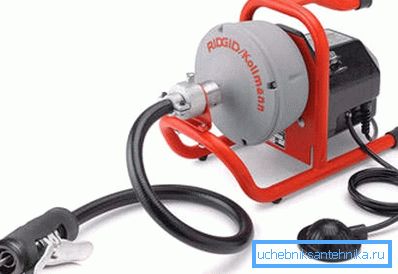
The order of work is as follows:
- A nozzle is put on the cable, after which the device is inserted into the drain hole and pushed inside the sewer pipe to the place where the plug is formed.
- After that, turn on the device and, gradually increasing the rotation speed, push the nozzle further.
- If the blockage is too tight, the drill will switch to idling (the cable will stop rotating).
- In this case, you need to push it back 30-40 cm and repeat the procedure again.
- Once the blockage is removed, you need to switch the device to reverse and pull the nozzle out of the pipe.
Conclusion
If you have a toilet in the apartment and water is standing, the problem should be solved as soon as possible. The methods listed above will help you eliminate the blockage and restore the functionality of plumbing fixtures.
As for the other engineering networks, about them in other materials of our site. And now watch the video in this article on today's topic.